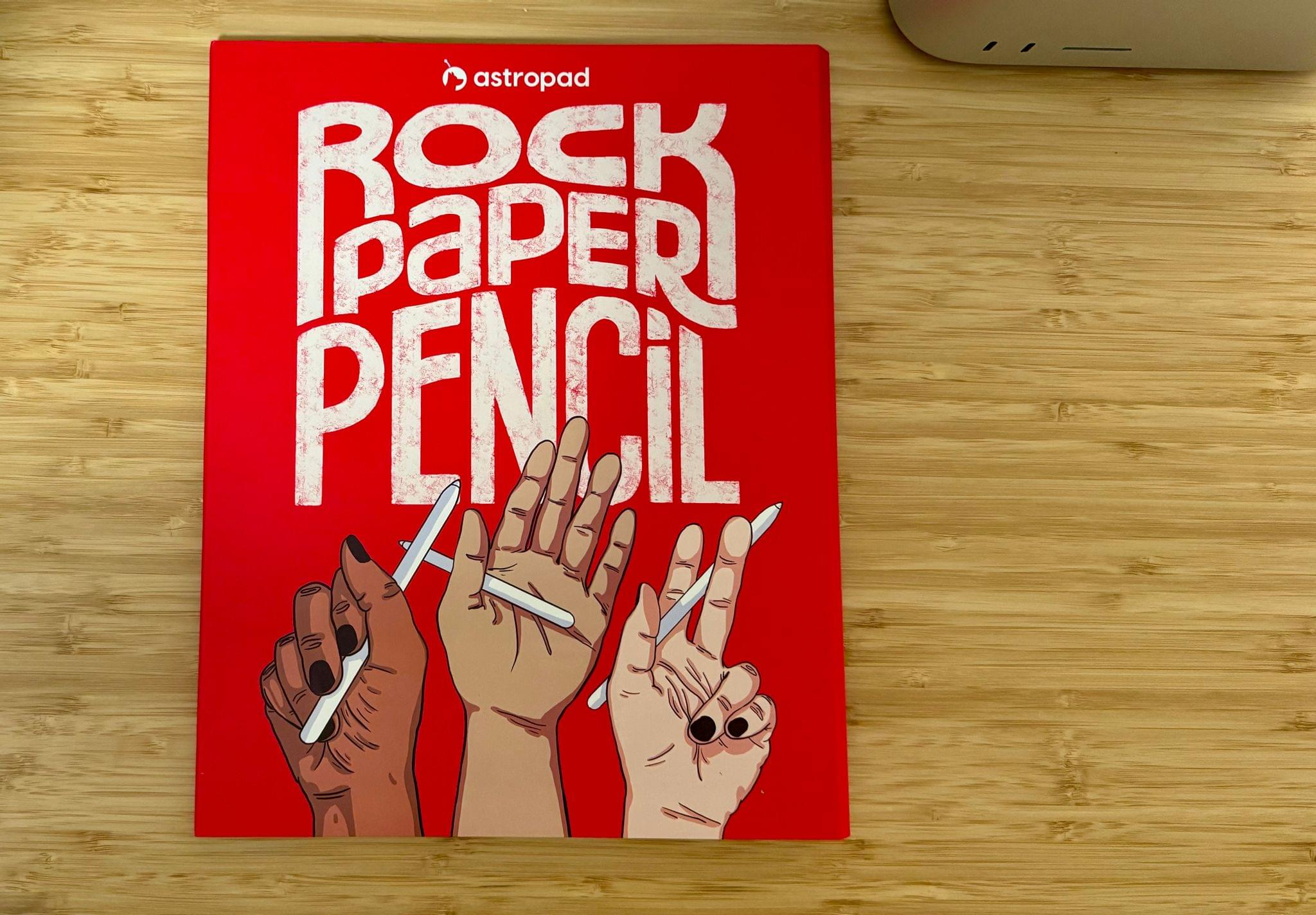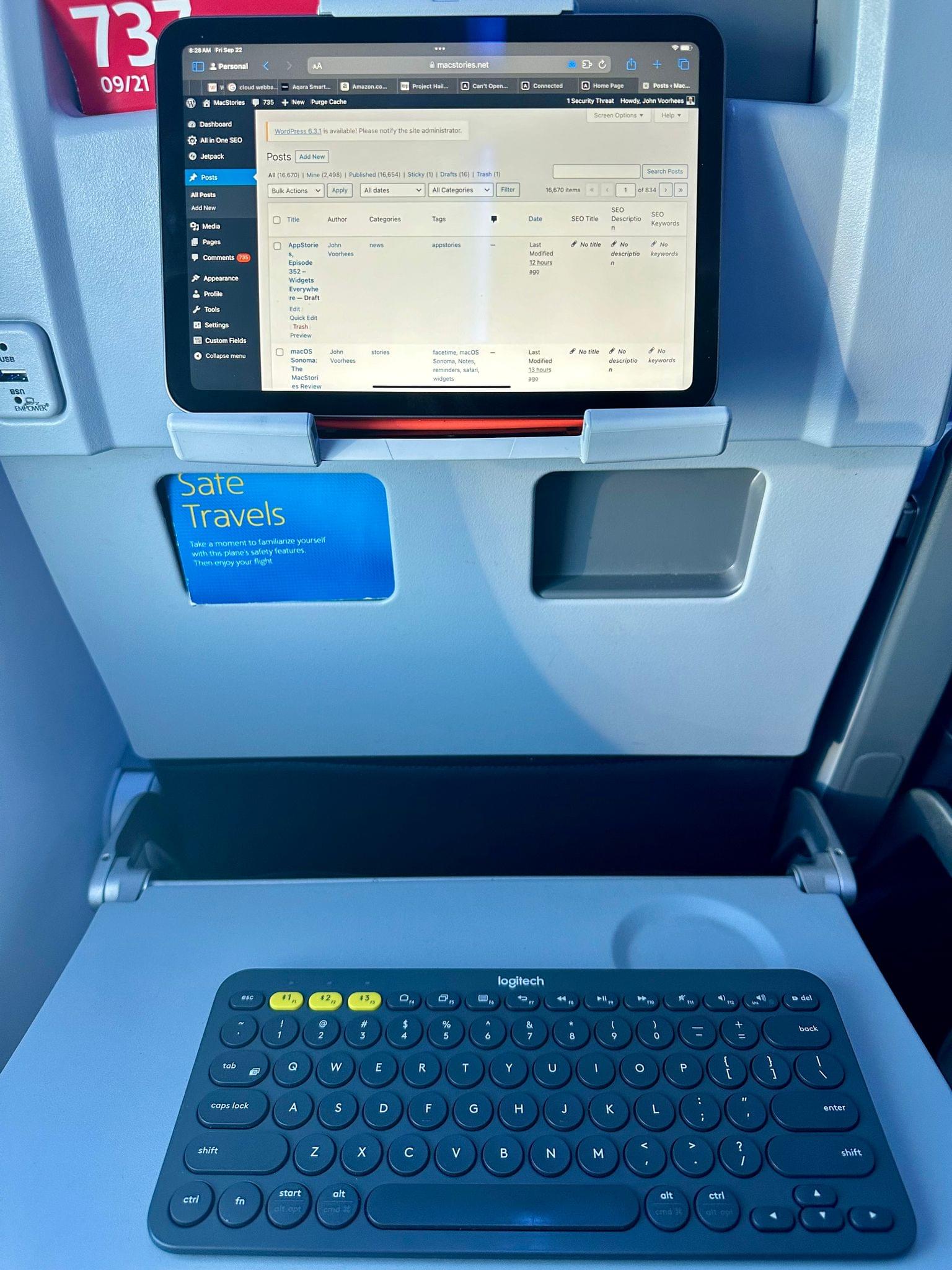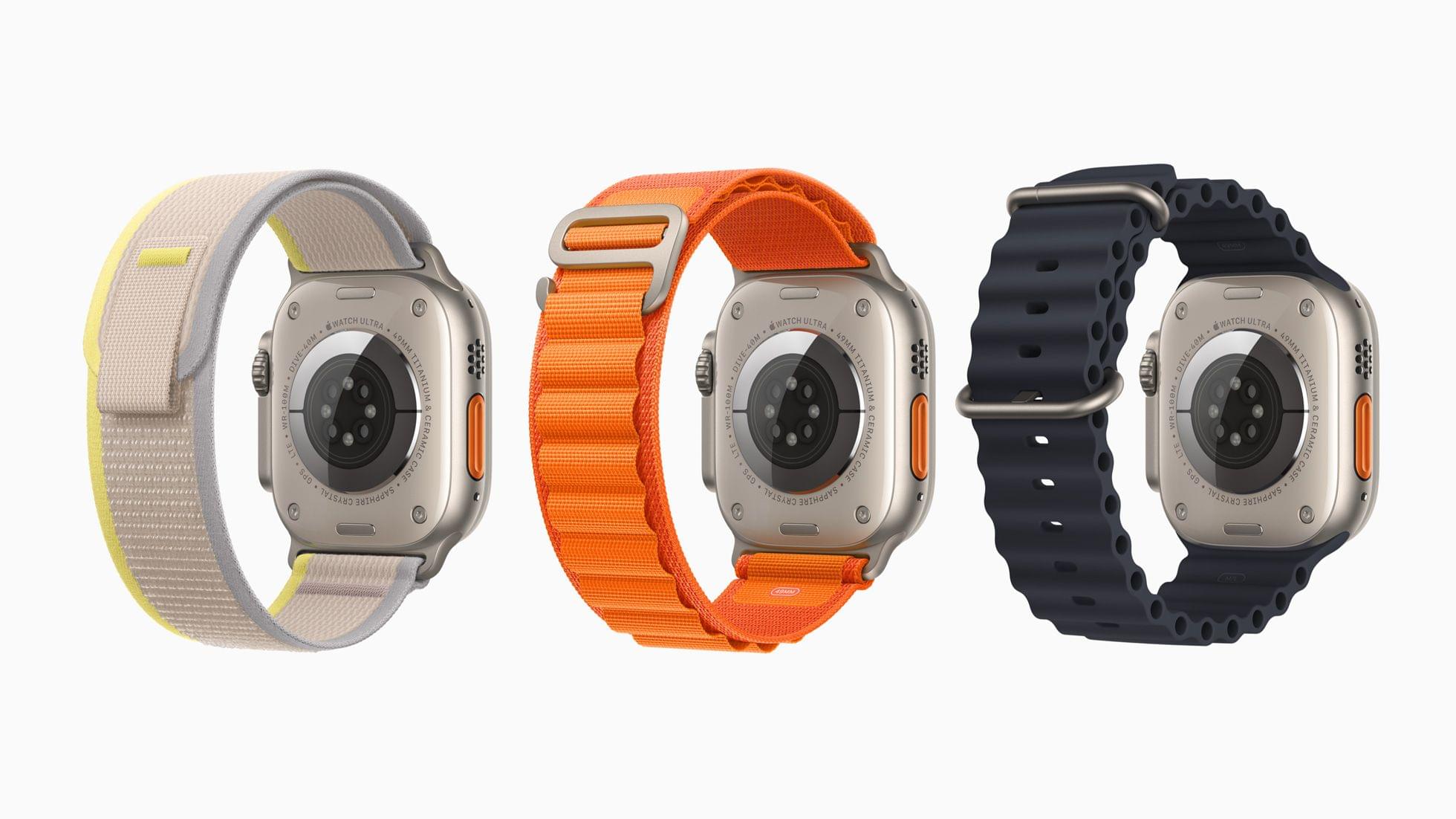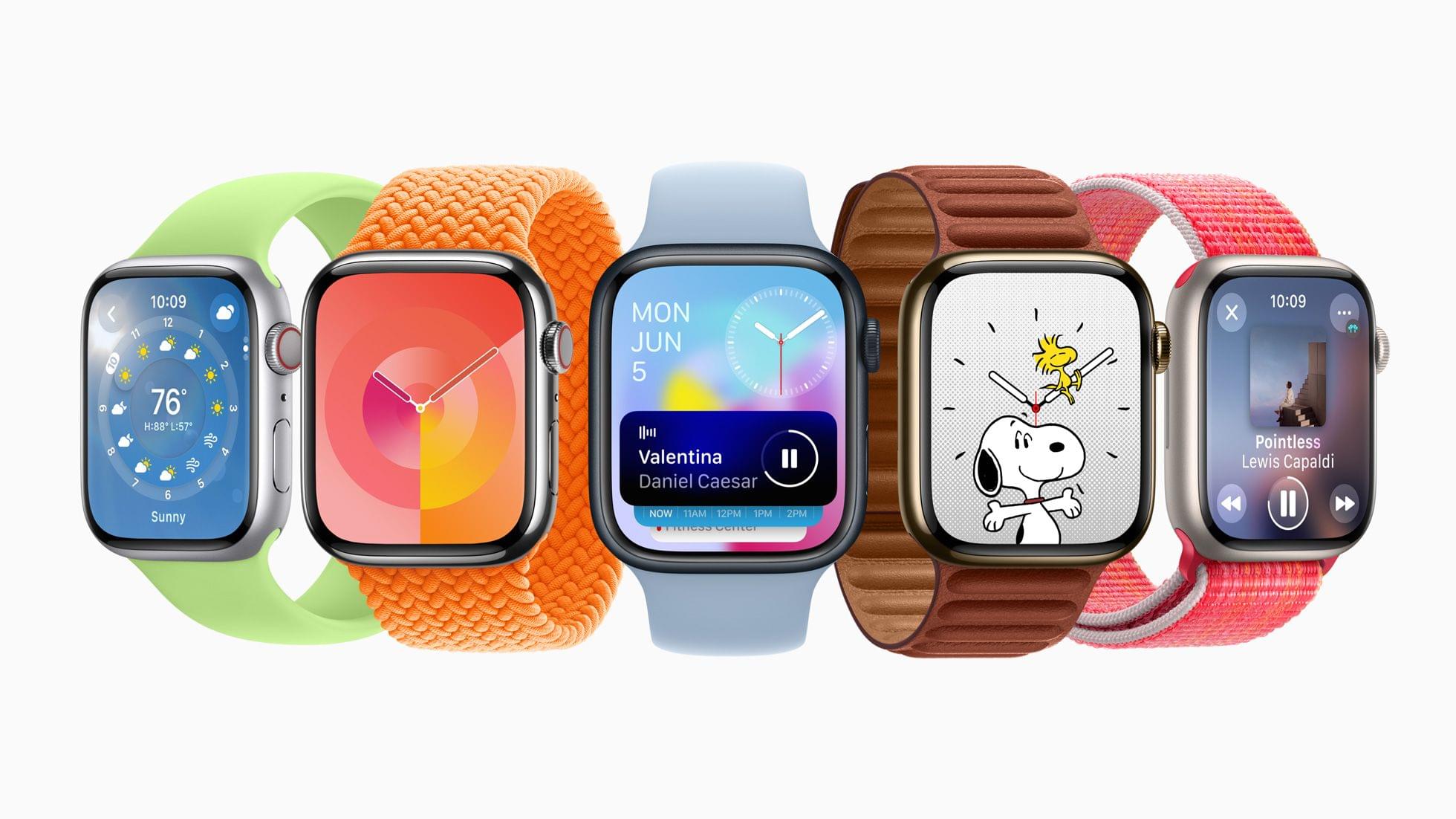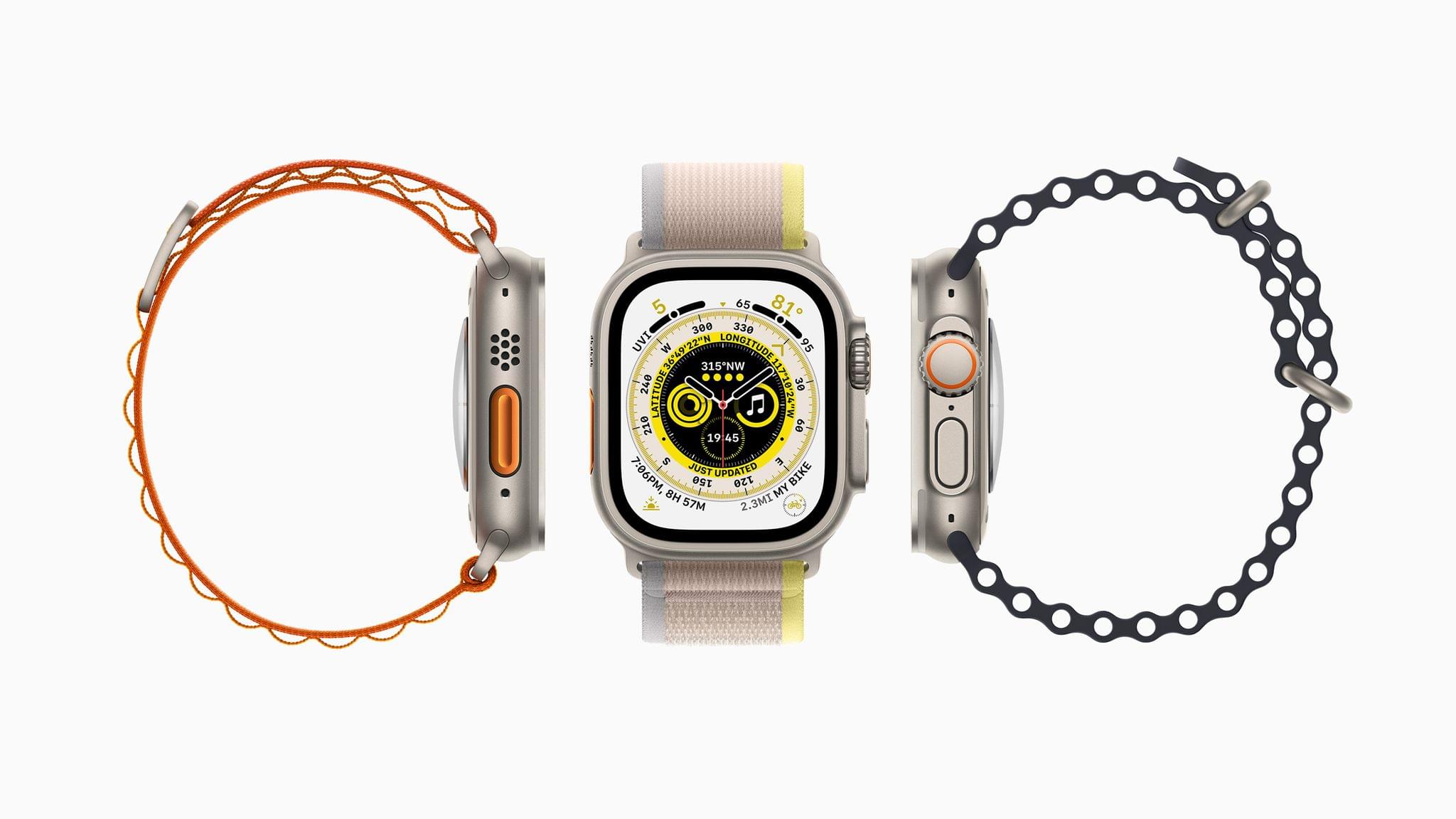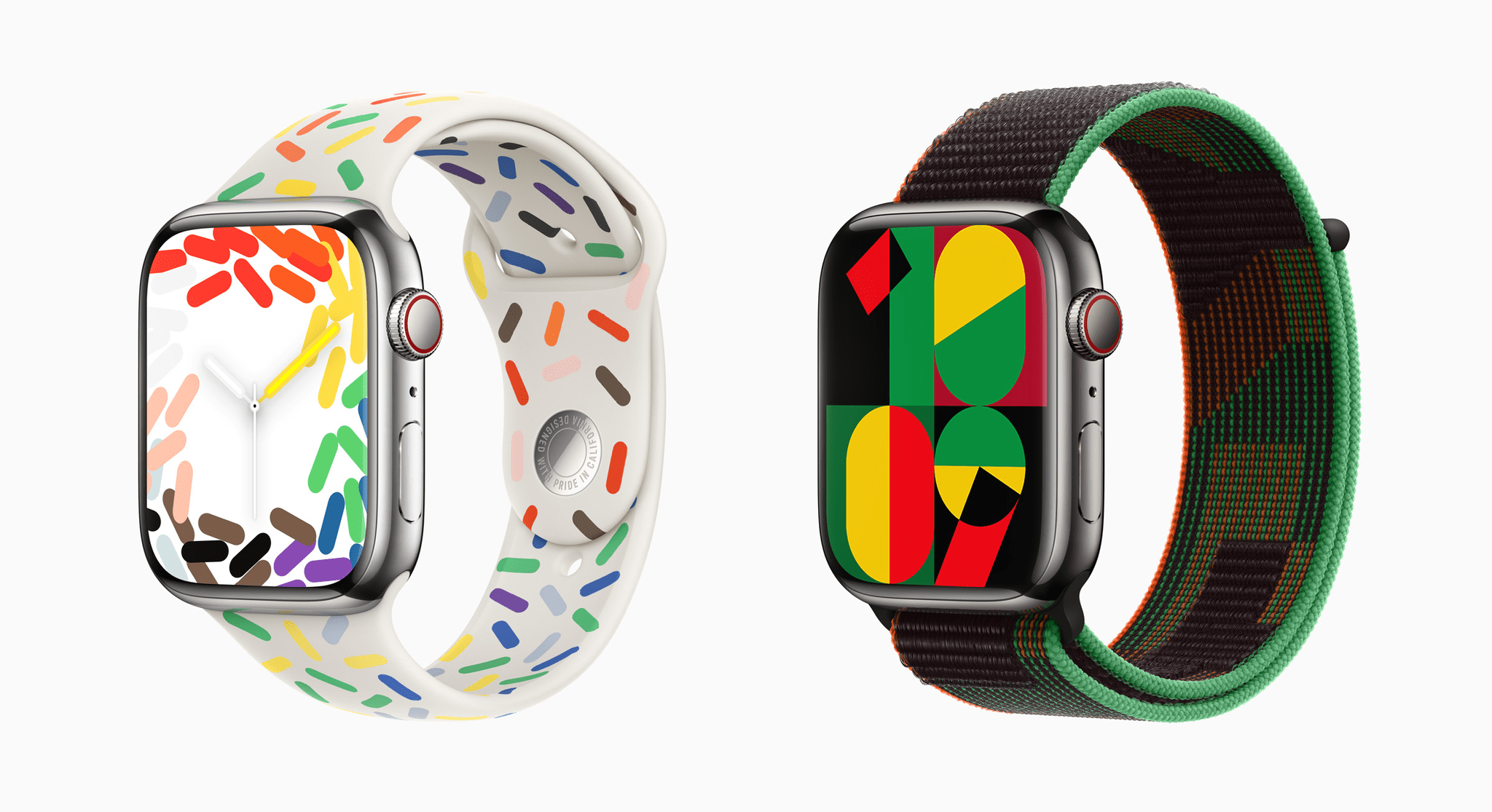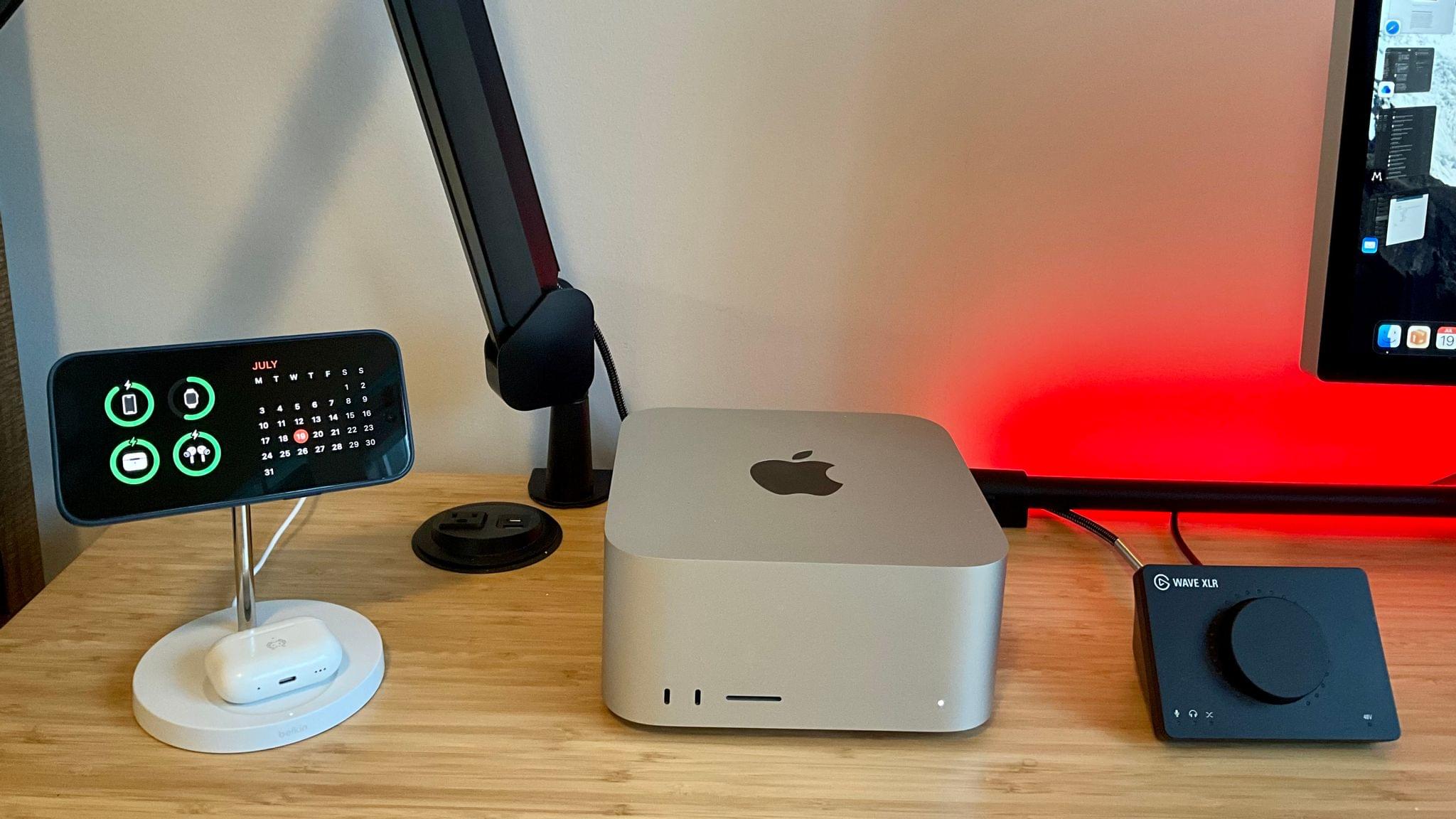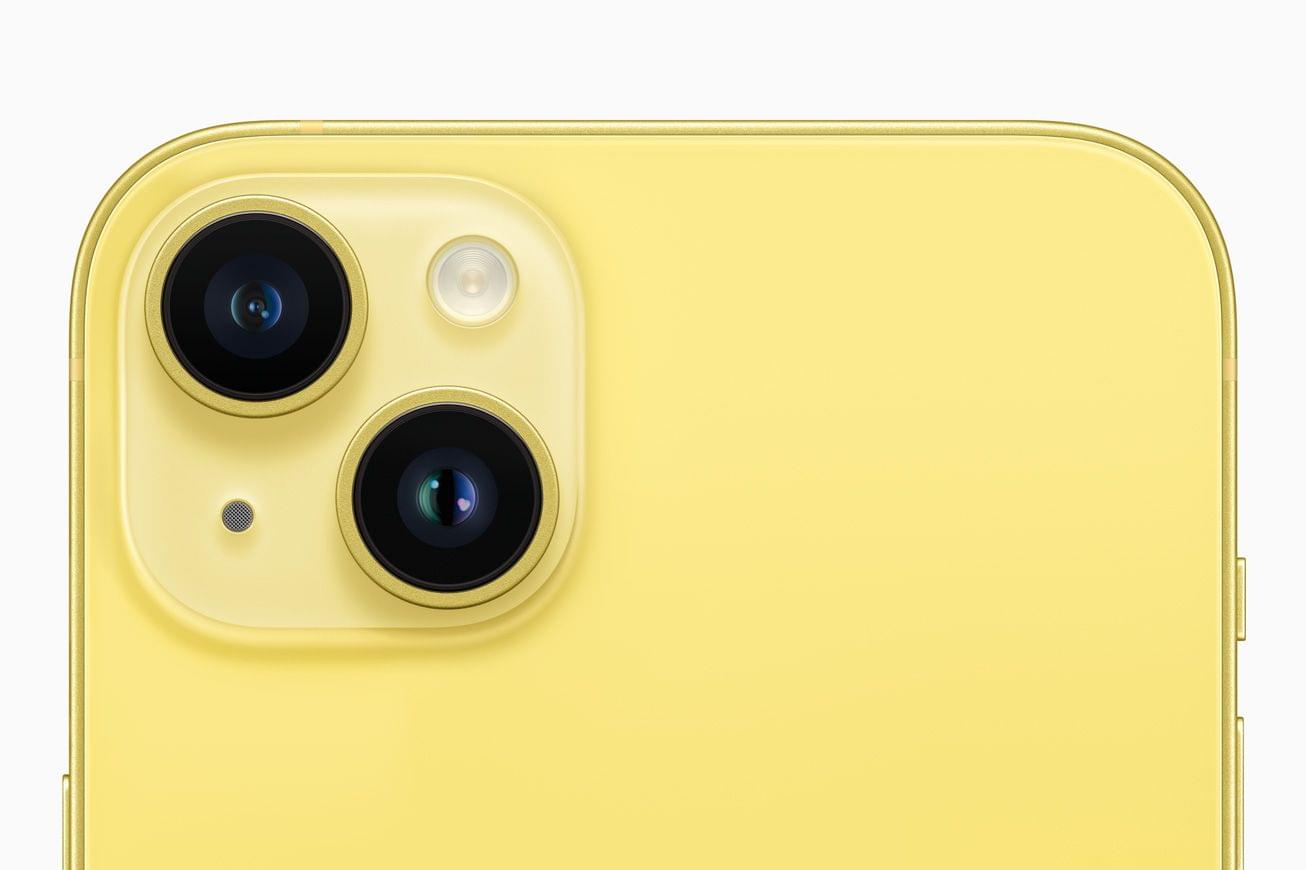It’s been years since I took a serious run at handwritten notes on the iPad. However, that changed with my recent experiments with the Boox Tab Ultra, which led me back to the benefits of jotting down handwritten notes as a quick capture system while I work. That’s why Aspropad’s new Rock Paper Pencil bundle of a nano-textured iPad screen protector and replacement Apple Pencil tips that mimic the feel of paper caught my eye. I’ve had bad luck with screen covers that feel like paper in the past, but as I’ll explain below, Astropad has created a unique package that offers the closest experience to writing or drawing on paper that I’ve ever tried while also being easy to use.
Posts tagged with "accessories"
Astropad’s Rock Paper Pencil Delivers A No-Compromise, Simple Paper-like Experience on iPad
The Mighty Mini Returns: Productivity Powerhouse at 34,000 feet
I’m sitting on an American Airlines flight, crammed in a window seat in economy class. I brought my iPad mini to catch up on some reading while I’m away, but at the last minute, I threw my Logitech K380 Bluetooth keyboard and a Twelve South Compass Pro. I cleared my task list for this trip, but it’s also been a while since I used the iPad mini for any productivity tasks, so I thought I’d bring it and the accessories along in case I had some downtime to do things like catch up on email.
I didn’t expect to do anything on the flight, especially writing. Tray tables are too shallow these days for even my M1 MacBook Air, let alone a mini in a stand with a separate keyboard. But when I settled into my seat, Jennifer pointed out the phone holder in the seatback in front of me. They’re meant for entertainment, replacing the in-seat screens airplanes used to have.
However, I discovered something arguably better that was also a fun opportunity to publish a story from 34,000 feet in the sky. When I pulled the little phone shelf out from the seatback, I saw the top bracket extended high enough that I could use it with my iPad mini. I signed up for in-flight Wi-Fi, paired the Logitech keyboard, and I was good to go.
The ergonomics are surprisingly good. The iPad is at eye level, and with nothing but the keyboard on the tray table, I can shove it closer to the seat in front of me, so my arms can extend to a comfortable position. The only downside is that without a pointing device, I have to reach up to log into websites and interact with some parts of apps, but it’s been far better than trying to type on a laptop or an iPad Pro in a Magic Keyboard. I highly recommend trying this the next time you need to work on an American Airlines flight.
The Apple Watch Ultra Needs More Band Choices
It was a warm, humid morning in North Carolina when I went out for a run today. I came back a sweaty mess, which got me thinking about my Apple Watch Ultra.
I’m no mountaineer, but I love the Ultra’s long battery life and big screen. It’s been my constant health and fitness companion for everything from sleep tracking to a variety of workouts. However, there’s one thing in particular that I miss from the standard Apple Watch: band choices.
The last thing I wanted to do after a post-run shower was put my Apple Watch Ultra back on with its soggy Alpine Loop band. So, I did what’s become a regular post-run habit of swapping bands and tossing the sweaty one in the laundry. Besides the Starlight Alpine Loop that came with my Ultra, I have a Black/Gray Trail Loop. Of the two, I like the Trail Loop better because the Alpine Loop’s clasp sometimes digs into my wrist as I type. However, I use both regularly because one is almost always waiting for me to do a load of laundry.
I’ve been running more. As a result, my two bands have begun to dictate when my laundry gets done, whether I have much else to wash or not. That led me to Apple’s website to buy a third band, where I was immediately struck by the lack of choices.
If you own the standard Apple Watch, you have dozens of options at a wide variety of price points. Apple offers the Sports Loop, Braided Solo Loop, the Solo Loop, the Nike Sports Band and Loop, two types of leather bands, stainless steel bands, and Hermès bands at price points from $49 for many models to $599 for the Hermès Orange/Blanc Swift Leather Casaque Double Tour. There are so many bands for the standard model that there’s an entire website and app dedicated to collectors of the bands, which makes sense because, after all, the Watch is a wearable that’s not just a wrist computer. It’s also a fashion accessory.
So why, with so many standard Apple Watch bands, are there just three models in three colors at a single price point for Apple Watch Ultra owners? Looking at the Sports Band alone, there are nine options available for the standard Apple Watch. I really don’t get it. I like the three choices offered for the Ultra, but I’d like more colors, styles, and price options. I certainly don’t think the limited choice is because the Ultra has been a flop because I see them when I’m out all the time.
I recognize that I could buy a band from a third-party company. Perhaps that’s what I’ll end up doing because what I really want is something akin to the Sports Band that can be cleaned without putting it in the laundry. Alternatively, I may start using my collection of standard Apple Watch bands. They work, but I don’t think they look great with the Ultra’s big watch face, so that’s not ideal either.
What I would prefer is an Ultra band update schedule comparable to the standard Watch. Apple has made it a tradition of refreshing bands in the fall and spring and issuing special editions, like the Black Unity and Pride Edition models, at other times of the year. I expect we’ll see new bands for the Ultra this fall, and while I’m sure the Ultra market is significantly smaller than the original Watch’s, my wish for 2024 is to not have to wait another full year for new Ultra bands.
An In-Depth Look at StandBy and the StandBy Chargers We Recommend
John: Part of the widget story for all of Apple’s OSes this fall is StandBy, an iPhone-only mode that displays widgets, a clock, or photos when your device is stationary and charging in landscape orientation. When StandBy was first rumored before WWDC, I was skeptical. It didn’t sound like something I needed or would find useful. Boy, was I wrong. I’ve been using StandBy daily since just after WWDC at my desk and on my nightstand, and I’ve enjoyed it so much that I’ve begun using it elsewhere, too. So, today, I thought I’d hit the highlights of what StandBy can do because it’s a lot and not immediately obvious and, along with Federico, recommend several chargers that we’ve been using to enable it.
Working Remotely with Belkin’s BoostCharge Pro
Update (October 14, 2024): The Belkin BoostCharge Pro Wireless Charger has been recalled and should not be used. Details here.
It’s Tuesday morning, and I didn’t feel like working at home today, so after breakfast, I headed out to the co-working space I joined in the spring. As I got ready, I realized my MacBook Air’s battery was a little low. I used it a lot yesterday and didn’t charge it overnight. My Apple Watch Ultra battery was a bit low, too, thanks to the extra drain of the watchOS 10 beta.
With plans to spend most of the day away and on foot, I wanted to travel light, so instead of grabbing my big 25,600 mAh Anker battery, I went for the Belkin BoostCharge Pro charger. The compact charger, which Belkin sent me for testing about a week ago, seemed perfect for this kind of scenario. The charger is compact and lightweight compared to larger options and has the added benefit of a built-in Apple Watch charging pad.
Brydge Ceases Operations, Leaving Employees in the Lurch→
Chance Miller published an excellent exposé on the downfall of Brydge, an iPad, Mac, and Microsoft Surface accessory maker. The company got its start with a Kickstarter campaign in 2012, and for a time, its keyboard accessories were a popular choice among iPad users, including me.
However, as Chance explains, Brydge’s fortunes took a turn for the worse as it was forced to compete head-on with Apple’s Magic Keyboard, later spiraling out of control as its cash flow ran out:
Brydge, a once thriving startup making popular keyboard accessories for iPad, Mac, and Microsoft Surface products, is ceasing operations. According to nearly a dozen former Brydge employees who spoke to 9to5Mac, Brydge has gone through multiple rounds of layoffs within the past year after at least two failed acquisitions.
As it stands today, Brydge employees have not been paid salaries since January. Customers who pre-ordered the company’s most recent product have been left in the dark since then as well. Its website went completely offline earlier this year, and its social media accounts have been silent since then as well.
From what former employees told 9to5Mac, it appears that a number of factors contributed to its downfall, but the saddest part of the story is how Brydge treated its employees, keeping them in the dark and, in many cases, unpaid to this day.
Automation April: The Loupedeck Live S Is a More Portable and Affordable Automation Control Panel for the Mac
In 2021, I reviewed the Loupedeck Live, a programmable control panel for the Mac and Windows PCs for Club MacStories members as part of my Macintosh Desktop Experience column. It’s an excellent device, but its price put it at a disadvantage to a similarly-sized Elgato Stream Deck despite several other advantages that I explained in the review.
Last year, Loupedeck released the Loupedeck Live S, a smaller, more affordable Loupedeck that retains the core experience of the Loupedeck Live, but dispenses with a handful of physical buttons and dials. The new device retails for $189 compared to the Loupedeck Live, which is $269. That’s still $40 more than the 15-button Stream Deck MK.2, but a significantly narrower difference for a device that offers a wider range of functionality, making it worth another look if you were put off by the Loupedeck Live’s price.
Apple Announces Yellow iPhone 14 and 14 Plus Along with New Case Colors
A new spring iPhone color has become an annual tradition for Apple. Today, the company announced that a pale yellow model is joining the midnight, starlight, (PRODUCT)RED, blue, and purple versions of the iPhone 14 and iPhone 14 Plus.
Apple also said that its Emergency SOS service is coming to six new countries later this month:
- Austria
- Belgium
- Italy
- Luxembourg
- Netherlands
- Portugal
The new yellow iPhone will be available for pre-order beginning at 5 am Pacific time in the US on Friday, March 10th, with availability beginning Tuesday, March 14th.

Apple also released four new Apple Silicone Cases for the iPhone 14 and iPhone 14 Plus. Source: Apple.
In a footnote to today’s iPhone announcement, Apple said that new canary yellow, olive, sky, and iris Silicone cases will be available for the iPhone and iPhone 14 Plus too.
Apple Contributes Magnetic Coupling Tech to the Qi Charging Standard→
Sean Hollister of The Verge reports that Apple is contributing aspects of its MagSafe charging technology to the Qi wireless charging standard, which will bring magnetic coupling to Qi2-compatible mobile phones, including Android phones. According to Hollister’s interview with Paul Golden, a spokesperson for the Wireless Power Consortium:
There’s no reason to think a future Qi2 charger wouldn’t work seamlessly and identically with both Android and iPhones, Golden says when I ask. That’s because Apple, a WPC “steering member” (and chair of the board of directors) is contributing essentially the same “magnetic power profile” as MagSafe to the new Qi2 standard.
Hollister also reports that faster charging speeds are next on the Wireless Power Consortium’s to-do list:
That’s not all the WPC is working on, either! While the Qi2.0 release is largely just about adding magnets — it’s still primarily for phones, still tops out at 15 watts, still has the same foreign object detection, etc — the WPC intends to take advantage of guaranteed magnetic coupling to give us faster charging speeds, too. “When we finish with the spec for Qi2, we’ll immediately start working on a significantly higher power profile level for the next version of Qi2,” says Golden.
I’m glad to see Apple contributing to the Qi standard. Very few third-party manufacturers are using the official MagSafe standard, which usually means they charge more slowly. By standardizing the underlying magnetic connection and focusing next on charging speeds, we’ll hopefully see broader adoption of faster wireless charging across mobile phone accessories.


